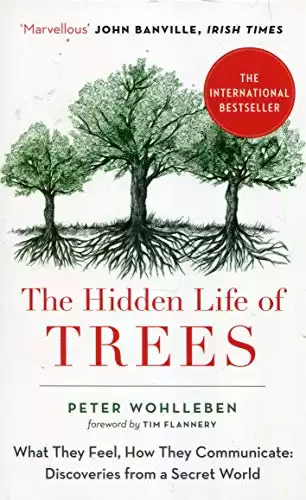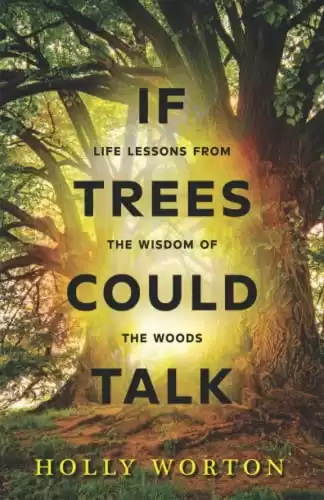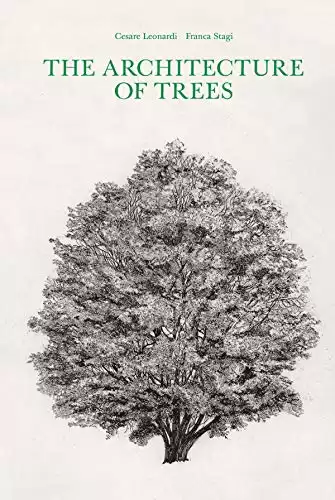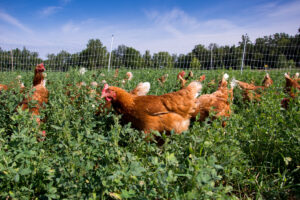| Best for | Product |
|---|---|
| Best Overall | The Hidden Life of Trees |
| Best for Kids | The Magic and Mystery of Trees (The Magic and Mystery of Nature) |
| Best Photography Book | Wise Trees |
| Best for Reconnecting with Nature | If Trees Could Talk: Life Lessons from the Wisdom of the Woods (Secrets of Tree Communication) |
| Best Illustrated | The Architecture of Trees |
| Best Guide | The Sibley Guide to Trees (Sibley Guides) |
Surely you know that humans can’t live without trees but how far does your knowledge of trees extend? No matter how well-versed you are in any topic, there’s always something new to discover. You may be an arborist, a land architect, or just someone with an ever-curious approach to life. Whether you like getting technical or you want to get spiritual, there are books about trees for you.
To provide you with a well-rounded list, we did a bit of digging to find the best books about trees available today. We highlight one that invites you to learn the language of trees to discover their secret world. Your favorite kiddos shouldn’t be left out, so we include a book for kids that helps them see the magic of trees. We include a photography book, an illustrated work, and one that helps you reconnect with nature — and consequently yourself.
 Check Amazon
Check Amazon- The first in the three-book Mysteries of Nature series.
- Written by forestry and woodland expert, Peter Wohlleben.
- Written in easy-to-understand language.
 Check Amazon
Check Amazon- 80 pages.
- Recommended for children ages 3 through 9.
- Works to explain the science of tree communication.
 Check Amazon
Check Amazon- 192 pages.
- Contains photographs of more than 50 historical trees from around the world.
- Compiled and written by two foremost landscape photographers, Diane Cook and Len Jenshel.
A-Z-Animals’ Top Picks for the Best Books About Trees
1. Best Overall: The Hidden Life of Trees: What They Feel, How They Communicate — Discoveries from a Secret World by P. Wohlleben
The best book about trees is The Hidden Life of Trees: What They Feel, How They Communicate — Discoveries from a Secret World. This book is available in Kindle, audiobook, hardcover, and paperback formats. It explores the previously unknown capability of trees to feel and communicate. It’s a scientific work that relays all the groundbreaking discoveries researchers have made in recent years. The author is Peter Wohlleben, a long-time lover of woods and forests. Although scientific in nature, he uses digestible language anyone can understand. He has made many observations on his own. He’s explored the different processes of life, death, and regeneration. There are scientific processes behind all these wonders, and he didn’t even know it.
The book goes on to explain that trees are very much like human families. The tree parents live together, and they have tree children. They communicate with them, and they support them as they grow by sharing nutrients with those that are sick and struggling. They create an ecosystem to protect themselves against the impact of extreme weather. Since they take such careful precautions and interact with one another regularly, these trees can grow to live for many, many years. Just like humans, when trees are not supported and instead live solitary lives, they have a much harder time and typically die much sooner than those that live in a supportive group.
Customers rate this book 4.7 out of five stars. They describe it as excellent and unforgettable. From cover to cover, the book is overflowing with amazing observations. Once through reading it, customers say that their thoughts of forest environments have completely transformed. They view them as truly living and intelligent entities instead of just a pretty backdrop. One customer says that this book changed her life. The introduction was one of the most fascinating she’s ever read. The author manages to blend facts and science into a captivating narrative. She highly recommends it to anyone looking to learn more about trees.
One reader objected to the author’s “anthropomorphism of trees.” A few said that the author’s writing style was difficult to read and some called it “boring.”
Pros and Cons of The Hidden Life of Trees: What They Feel, How They Communicate — Discoveries from a Secret World by P. Wohlleben
| Pros | Cons |
|---|---|
| This book is available in Kindle, audiobook, hardcover, and paperback formats. | One reader objected to the author’s “anthropomorphism of trees.” |
| It explores trees’ capacity to feel and communicate. | A few reviewers said that the author’s writing style was difficult to read |
| Though the book is scientific in nature, the author, Peter Wohlleben uses accessible language that anyone can understand. | Some reviewers called it “boring.” |
| The book explains that trees have families much like humans do. Tree parents communicate with their children and share nutrients with them when they’re sick. | |
| Trees also create an ecosystem to protect themselves against the impact of extreme weather. | |
| Trees that live solitary lives typically die much sooner than those that live in a tree family. |
- The first in the three-book Mysteries of Nature series.
- Written by forestry and woodland expert, Peter Wohlleben.
- Written in easy-to-understand language.
2. Best for Kids: The Magic and Mystery of Trees by Jen Green (Author), Claire McElfatrick (Illustrator)
Learning about trees isn’t just for adults, so we had to include a tree book for kids. This book is suitable for children between three and nine years old. It’s available in Kindle and hardcover formats and touches on everything from the highest branches and leaves all the way down to the web of roots that reaches deep into the earth. The intent of this book is to take children on a mesmerizing journey to explore just how special these mighty organisms are. For example, children learn that trees know how to communicate with one another. They actually help each other by sending warnings when there are predators in their vicinity.
Trees can also record the past and anticipate future events to ensure their own survival. Your child learns about tree communication and gets to enjoy detailed illustrations on every page. There are also some fun and practical activities included so your child can put what they’re learning into action. For example, one of the activities is planting your own tree. Another is measuring a tree’s age. It’s split into four main chapters that cover topics like reproduction, rainforests, tree roots, and deforestation.
Customers rate this book 4.9 out of five stars. They describe it as beautiful and informative. It dives into several deep topics but it’s super easy to understand, even for the youngest reader. The illustrations complement the text perfectly, providing a varied and colorful overview of how trees live. Some customers have added this to their homeschool curriculums while others have almost not given it to the child it was intended for and kept it for themselves. Instead of robbing the kiddo of the experience that is this book, they decided to purchase a second copy for themselves!
Several reviewers pointed out that an oak leaf was labeled as a maple leaf.
Pros and Cons of The Magic and Mystery of Trees by Jen Green (Author), Claire McElfatrick (Illustrator)
| Pros | Cons |
|---|---|
| This book is appropriate for kids ages three to nine. | Several reviewers pointed out that an oak leaf was labeled as a maple leaf. |
| It’s available in Kindle and hardcover. | |
| The author’s intent was to explore how special trees are, including such information as how they communicate with one another and warn each other when predators are in the area. | |
| The book includes fun and practical activities so they can put their new knowledge into action, such as planting their own tree and measuring a tree’s age. | |
| The book is split into four main chapters: reproduction, rainforests, tree roots, and deforestation. |
- 80 pages.
- Recommended for children ages 3 through 9.
- Works to explain the science of tree communication.
3. Best Photography Book: Wise Trees by Diane Cook (Author), Len Jenshel (Author), Verlyn Klinkenborg (Introduction)
You can take a scientific approach to learning about trees and you could also take more of an artistic perspective and enjoy stunning photography. This book contains more than 50 historical trees, each with a captivating story. These trees are from around the world. The photographers Diane Cook and Len Jenshel spent two years traveling and visiting 59 sites throughout five continents to capture these incredible and inspirational trees. They remind you that although trees can live without humans, humans cannot live without trees.
Cook and Jenshel are intentional with the trees they share in this book, highlighting those that have impacted and shaped human lives. These are wise trees that have shaped different traditions and human emotions about nature. There are some survivor trees in the book, including a camphor tree in Nagasaki. This tree survived the atomic bomb. The photographers carefully hand-picked all of the trees in these photographs because of the role they played in human dramas. It’s a project meant to inspire awareness while you appreciate all of these extraordinary trees and the stories behind them.
Customers rate this book, which is available in Kindle and hardcover formats, 4.9 out of five stars. They describe the photography as superb. One comments that this book was larger than he expected but it only enhances the beauty of the photos. He enjoyed flipping through it himself just before gifting it over to his tree-loving, arborist friend/neighbor. Another customer purchased this book as a gift for a landscape architect. This architect also happens to be a certified arborist and when she received this book, she was absolutely thrilled. It can certainly serve as a lovely coffee table book but for those who truly appreciate trees, it is the best gift.
Pros and Cons of Wise Trees by Diane Cook (Author), Len Jenshel (Author), Verlyn Klinkenborg (Introduction)
| Pros | Cons |
|---|---|
| This book includes photos of nearly 60 historical trees, each with a captivating story. | None |
| The photographers spent two years and visited five continents to capture these photos. | |
| The trees highlighted have impacted and shaped human lives, such as the camphor tree in Nagasaki that survived an atomic bomb. |
- 192 pages.
- Contains photographs of more than 50 historical trees from around the world.
- Compiled and written by two foremost landscape photographers, Diane Cook and Len Jenshel.
4. Best for Reconnecting with Nature: If Trees Could Talk: Life Lessons from the Wisdom of the Woods by Holly Worton
If you love the great outdoors and feel like there might be something missing in your life, this is a book that helps you get back on track. It’s easy to feel disconnected from yourself, particularly when your attention is flowing outward toward all of your responsibilities. Without regularly checking in with yourself, you might lose sight of who you are. It might even be that you’ve never truly known yourself. You turn on autopilot and everything goes fine but you can’t shake the thought that your experience could be better.
Holly Worton is the author of this book. She spent the last couple of years talking to trees. That might sound weird to some but if you are reading this, it likely makes sense. She’s talked to the yews, the beeches, the oaks, and the sycamores. But is she really communicating with them? Well, trees are certainly living, breathing organisms. They have a much broader perspective than you might imagine, and they live for hundreds and even thousands of years. They might have something worth connecting to. Worton invites you to dispel your previous notions and talk to trees. They may just be the key to helping you see what you need to see inside yourself.
Customers rate this book, which is available in Kindle, hardcover, paperback, and audio formats, 4.4 out of five stars. They appreciate that it delivers messages from nature along with some fun facts. One customer wasn’t even sure what to expect when he picked up this book. He read some reviews but still didn’t know how he would feel about it. He Loves spending time in nature and has had his own moments with trees. He’s not shy about exploring beyond what the eye can see. He learned about different tree species and the stories behind some of the more famous trees. He’s glad he purchased it and plans to keep telling more people about it so he recognizes that this type of bug may not be for everyone.
A few reviewers said that the book was unbelievable, including one who called it a “Ridiculous book of nonsense. This is a example of a real Kook, who wrote a book and thinks we are all as crazy and mixed up mentally as she is. While trees are a living plant, and have no ears, no eyes, no nose, no mouth, no brain, no heart, and are plant not animal or human, they will communicate as well as a potato ,ear of corn or
Whatever, COME ON.”
Pros and Cons of If Trees Could Talk: Life Lessons from the Wisdom of the Woods by Holly Worton
| Pros | Cons |
|---|---|
| The author spent the past couple of years talking to trees, but did she communicate with them? | Some readers may find this book a little kooky. |
| Worton invites you to dispel preconceived notions and talk to trees as a way of getting to know yourself better. |
- 332 pages.
- A book for those looking to connect with nature on a new or deeper level.
5. Best Illustrated: The Architecture of Trees by Cesare Leonardi and Franca Stagi
For an illustrated book, you can pick up The Architecture of Trees. This is a landscape architect’s dream because it incorporates all things tree related. It is a large format, hardcover volume of incredibly detailed illustrations. Two landscape architects, Cesare Leonardi and Franca Stagi, put this book together after 20 years of dedicated study. The book features over 550 quill pen drawings of trees. They include those with and without foliage and there’s also a complete table of seasonal color variations. There are shadows included as projected based on the hours of daylight and also by season. There’s no other tree book you can find that contains this much scientific detail.
Customers rate this book 4.8 out of five stars. They describe it as excellent work. The detail is in-depth and the information is specific. The graphics and illustrations are outstanding. One customer says this is exquisite work. Every detail of this book is beautiful and substantial. She calls it perfect. One customer purchased it for his girlfriend who is a certified landscape designer and architect. She was absolutely blown away. This is the type of book that you chip away at for years on end. It serves as an educationally helpful resource. It also serves as a work of art in and of itself and it is sure to have you completely mesmerized.
One reviewer said, “I liked the drawings which were very detailed and precise. I disliked that the tree names were entirely technical. I do not have an encyclopedic knowledge of scientific tree names and would have deeply appreciated having common names included where they exist.”
Pros and Cons of The Architecture of Trees by Cesare Leonardi and Franca Stagi
| Pros | Cons |
|---|---|
| This large format, hardcover volume includes incredibly detailed illustrations. | Some specimens only include their Latin names, not their common names. |
| Two landscape architects put this book together after 20 years of dedicated study. | |
| It includes over 550 quill pen drawings of trees, with and without foliage. | |
| It also includes a complete table of seasonal color variations. |
- 424 pages.
- Features over 550 drawings of trees.
- Useful for tree identification.
6. Best Guide: The Sibley Guide to Trees by David Allen Sibley
If you’re looking for more of a guide, this is helpful for trees of North America. It’s available in vinyl bound, paperback, and Flexibound formats. It’s small enough for you to take with you when you’re out on the field but it is monumental in scope. The subject is complex, and the author approaches it elegantly. He expertly manages to condense a wide range of information about tree identification in a very accessible and easy-to-use format. You discover 4,100 surprisingly detailed paintings to make field identification easier than ever.
Customers rate this book 4.8 out of five stars. The content is excellent, containing great drawings of different trees, bark, leaves, flowers, and more. One customer offers a humorous example of how nerdy sounding some of these descriptions are. He loves how beautiful it is and has a goal to learn the names of the trees that grow in his area but had to giggle at some of the text throughout. Nevertheless, he finds it a great addition to his bookshelf and has enjoyed leafing through it to learn the names of trees and to see how they grow in his area.
A few reviewers said that this book isn’t useful as a field guide for identifying trees.
Pros and Cons of The Sibley Guide to Trees by David Allen Sibley
| Pros | Cons |
|---|---|
| This guide will help you identify North American trees. | A few reviewers said that this book isn’t useful as a field guide for identifying trees. |
| It’s available in vinyl bound, paperback, and Flexibound formats and is small enough to take with you into the field. | |
| The book condenses a wide range of information about tree identification into an accessible, easy-to-use format. | |
| It includes 4,100 detailed paintings to make field identification easy. |
- 426 pages.
- Written and illustrated by naturalist and birdwatcher David Allen Sibley.
Criteria: What to Look for in Books About Trees
To make sure you pick up a book about trees you enjoy, you have to consider the type of person the author wrote the book for. You can find a wide range of books about trees, some that interest you, and some that don’t. For example, a landscape architect is able to fully understand and revel in detailed illustrations. This type of book, like the one we highlight in the above list, is the work of two landscape architects after two decades of studying. It’s a very specific book for a specific audience. There are some of you who love trees and who would also enjoy a book like this, even though you’re not a landscape architect. However, there are many of you who would not appreciate all of the details and technicalities.
On the other hand, you may be looking for a way to reconnect with nature and learn how trees communicate. You may even be on a spiritual journey to slow down your life and experience nature in a new way. If that’s the case for you, you likely want a book that teaches you more about how trees communicate and that helps guide you back into nature. Although a photography book might be nice to look at, it wouldn’t quite serve you in the way you’d like. Therefore, not any book about trees will do for you. Make sure you pick up something for yourself that you can thoroughly appreciate.
Remember that if you’re purchasing a book for a friend or for one of your kids, you have to select one at the appropriate reading level. There are books for children of different ages, books for teenagers, and books for adults. Be sure that when you decide on a book, it is at the appropriate reading level. Books for younger audiences quickly get dull and boring for more advanced readers. Similarly, a book that has complex content is not appropriate for a young reader. Children need shorter sentences and words because their vocabulary is still growing. Make sure that you purchase books at higher reading levels as your kiddos expand their vocabularies.
| Best for | Product |
|---|---|
| Best Overall | The Hidden Life of Trees |
| Best for Kids | The Magic and Mystery of Trees (The Magic and Mystery of Nature) |
| Best Photography Book | Wise Trees |
| Best for Reconnecting with Nature | If Trees Could Talk: Life Lessons from the Wisdom of the Woods (Secrets of Tree Communication) |
| Best Illustrated | The Architecture of Trees |
| Best Guide | The Sibley Guide to Trees (Sibley Guides) |
The 6 Best Books About Trees Available Today FAQs (Frequently Asked Questions)
What do you call the study of trees?
Dendrology is the appropriate term to use when describing the scientific study of trees.
What’s that book about the trees?
If you’re thinking of a children’s book, it may just be The Giving Tree, which has long been a popular title. If it’s not a children’s book, you may be thinking of The Overstory, another fiction book about trees.
Thank you for reading! Have some feedback for us? Contact the AZ Animals editorial team.







